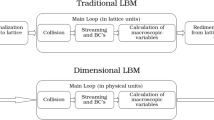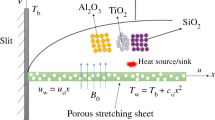Several models of heat transfer in partial nucleate boiling are identified in order to determine the relationship between the dominant physical parameters. The correlations are different for different models, so the main goal of this analysis is to determine the validity of each model and to identify the most dominant physical phenomenon in the nucleate boiling heat transfer. This is done by comparing the results of different models with a vast range of reliable experimental data. The comparison shows that the Sakashita and Kumada model gives the best results in the nucleate boiling heat transfer. It is also shown that the most dominating phenomenon in isolated partial bubbles zones is the transient conduction taking place mainly under the bubbles. This is in contradiction with a majority of the models that consider convection as the most important mode in the nucleate boiling heat transfer. The selected model can also be extrapolated and used in the case of fully developed bubbles zones.
Similar content being viewed by others
References
C. L. Tien, A hydrodynamic model for nucleate pool boiling, Int. J. Heat Mass Transfer, 5, 533–540 (1962).
K. Nishikawa and K. Yamagata, On the correlation of nucleate boiling heat transfer, Int. J. Heat Mass Transfer, 1, 219–235 (1960).
A. Hara, The mechanism of nucleate boiling heat transfer, Int. J. Heat Mass Transfer, 6, 959–969 (1963).
I. L. Pioro, W. Rohsenow, and S. S. Doerffer, Nucleate pool boiling heat transfer–I. Review of parametric effects of boiling surface, Int. J. Heat Mass Transfer, 47, 5033–5044 (2004).
H. Kurihara and J. E. Myers, The effects of superheat and surface roughness on boiling coefficients, AIChE J., 6, 83–91 (1960).
G. Kocamustafaogullari and M. Ishii, Interfacial area and nucleation site density in boiling system, Int. J. Heat Mass Transfer, 26, 1377–1387 (1983).
T. Kumada and H. Sakashita, Pool boiling heat transfer–II. Thickness of liquid macrolayer formed beneath vapor masses, Int. J. Heat Mass Transfer, 38, 979–987 (1994).
Y. Iida and K. Kobayashi, An experimental investigation on the mechanism of pool boiling phenomena by probe method, in: Proc. 4th Int. Heat Transfer Conf., Ðàris (1970), paper No. B1.1.
Author information
Authors and Affiliations
Corresponding author
Additional information
Published in Inzhenerno-Fizicheskii Zhurnal, Vol. 84, No. 2, pp. 286–291, March–April, 2011.
Rights and permissions
About this article
Cite this article
Hocine Benhamza, M.E., Chouarfa, F. Modeling of the solid–liquid bubble interface in partial nucleate boiling. J Eng Phys Thermophy 84, 305–311 (2011). https://doi.org/10.1007/s10891-011-0474-z
Received:
Published:
Issue Date:
DOI: https://doi.org/10.1007/s10891-011-0474-z




